4Leading Taegeukdo
- The Decade Spent Leading Taegeukdo
After Doju passed into Heaven, Dojeon led Taegeukdo for 10 years. In accordance with Doju’s deathbed edict, he conducted the Holy Works of Shihak (Serving the Teaching) and Shibeop (Serving the Dharma) and the Holy Works of Beophak (Dharma Study) and Cheonghak (Blue Study). To improve the reputation of the order and innovate it, Dojeon reorganized Taegeukdo’s internal and external systems. Also, to actualize the foundational idea of saving the world and relieving people, he implemented various societal projects including education and medical services. - The Site-Selection and Implementation of the Holy Works
While implementing the Holy Works (Gongbu) of Shihak (Serving the Teaching) and Shibeop (Serving the Dharma), Dojeon had various buildings constructed such as Jinyangwon, Baekhakgwan, and Cheonghakgwan. After the completion of these buildings, he also performed the Holy Works of Beophak (Dharma Study) and Cheonghak (Blue Study). Beophak was a form of spiritual training that prepared individuals for Cheonghak, a Holy Work that involved chanting the Taeeul-ju Mantra to test out the opening of one’s spiritual eyes. Dojeon had the Holy Works of Beophak and Cheonghak performed only temporarily according to a Degree Number at that time. - Maintaining the System of the Order and Carrying out Relief Works
In the Gyemyo Year (1963), Dojeon undertook the renovation of Taegeukdo’s overall system. To increase the order’s external credibility, he registered Taegeukdo as a religious order and established an incorporated foundation. Internally, The Dao Constitution and Rules and Regulations were enacted. The executive system was reorganized, and the doctrinal system and various cultivatory regulations were prepared by publishing Essentials for Dao Cultivation, Rules for Dao Cultivation (1963), and The True Scripture of Preaching the Dao (1965). Along with this, various social projects were promoted, including the establishment of a civic high school and Gamcheon Clinic in accordance with the founding philosophy of saving the world and relieving people.
- Moving to Seoul to Follow the Degree Number Calibrated by Sangje
“Since laws originate from the capital and spread in all directions...”
According to Doju’s deathbed edict, Dojeon constructed Jinyangwon, Baekhakgwan, and Cheonghakgwan at the Gamcheon Temple Complex in 1958. Additionally, a fellowship building was completed in 1967. As a result, the temple complex took on the shape of a ship departing from the coast of Gamcheon, with the surrounding embankment resembling billowing waves. After completing the memorial devotional offering for Sangje on the 24th day of the 6th lunar month of the Mushin Year (1968), Dojeon left Busan for Seoul to unfold the true dharma of Doju afresh.
“The creation of the Seoul Temple Complex was carried out in accordance with Sangje’s Degree Number of the ‘Parallel Advance both by Sea and by Land.’ Sangje ordered a disciple to write ‘A Son of Heaven Floating upon the Sea’ on a piece of paper and post it on Namdaemun Gate. Additionally, He had another disciple wrap a pair of glasses in the same paper with wishes written on it and threw it to the north, signifying the direction of Seoul.”
On the 2nd day of the 3rd lunar month of the Byeongoh Year (1906), Sangje ordered some of His disciples to travel by train from Daejeon Station to Seoul. Meanwhile, He and another group of disciples took a boat from Gunsan Port to Seoul. This simultaneous movement by land and sea was known as the ‘Parallel Advance Both by Sea and by Land.’
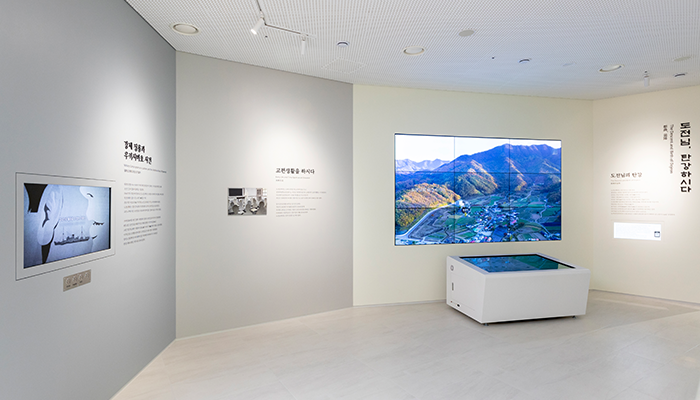
1Dojeon’s Descent and Birth

2Being Promoted as a Representative in Taegeukdo

3Receiving the Lineage Transmission by Deathbed Edict
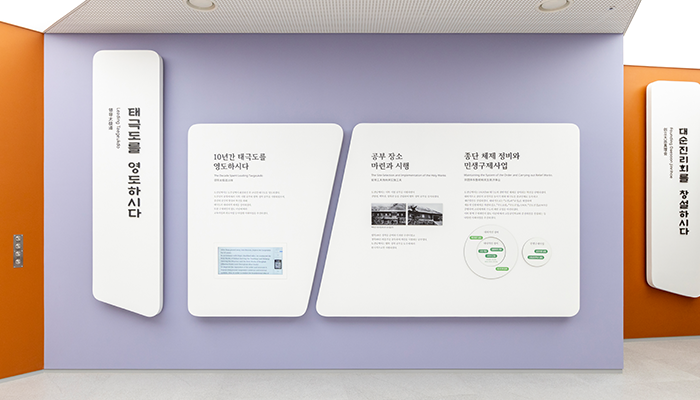
4Leading Taegeukdo
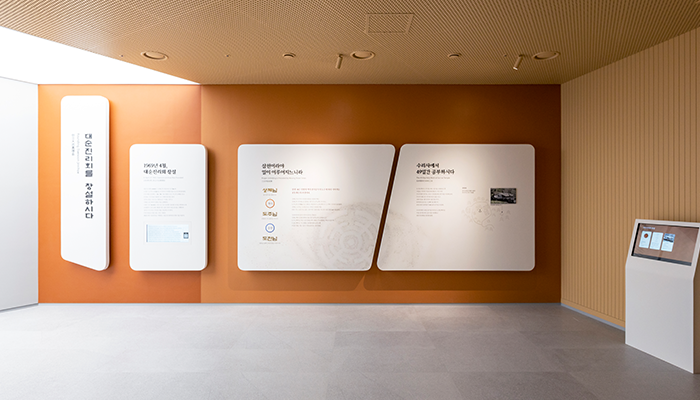
5Founding Daesoon Jinrihoe
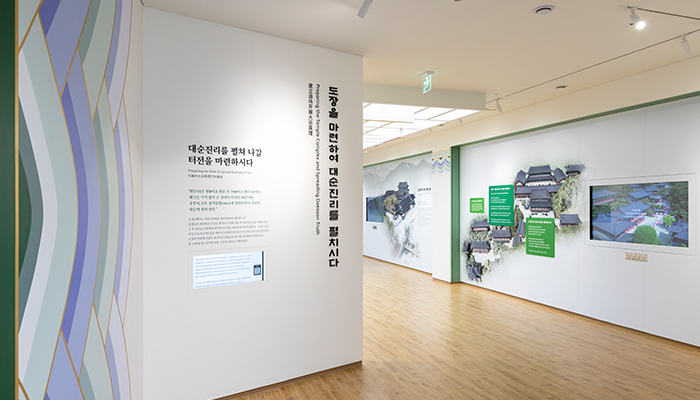
6Preparing the Temple Complexes and Spreading Daesoon Truth
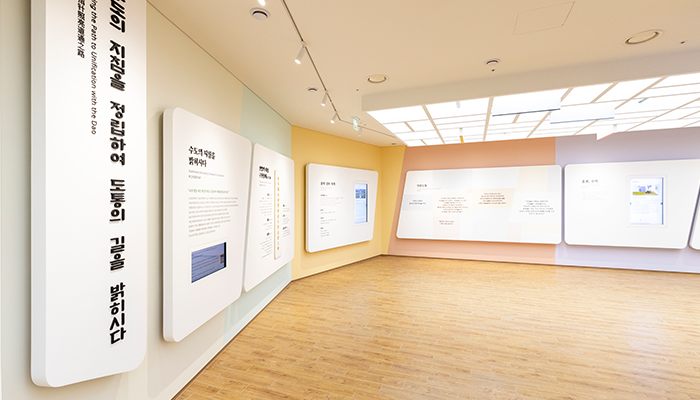
7Illuminating the Path to Unification with the Dao
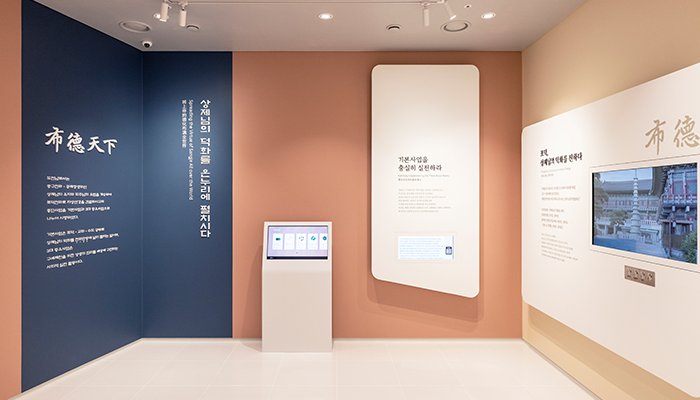
8Spreading the Virtue of Sangje all over the World
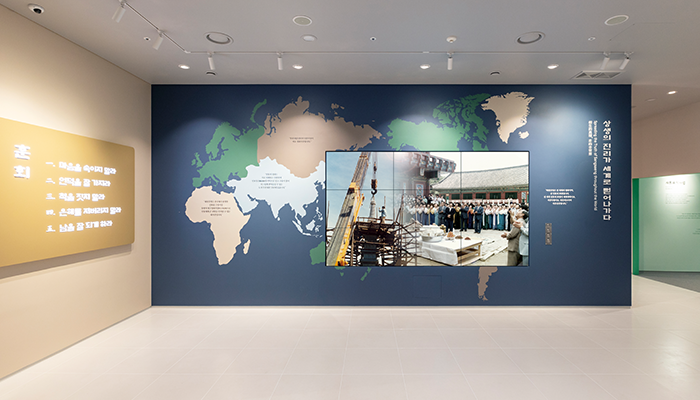
9Spreading the Truth of Sangsaeng throughout the World



